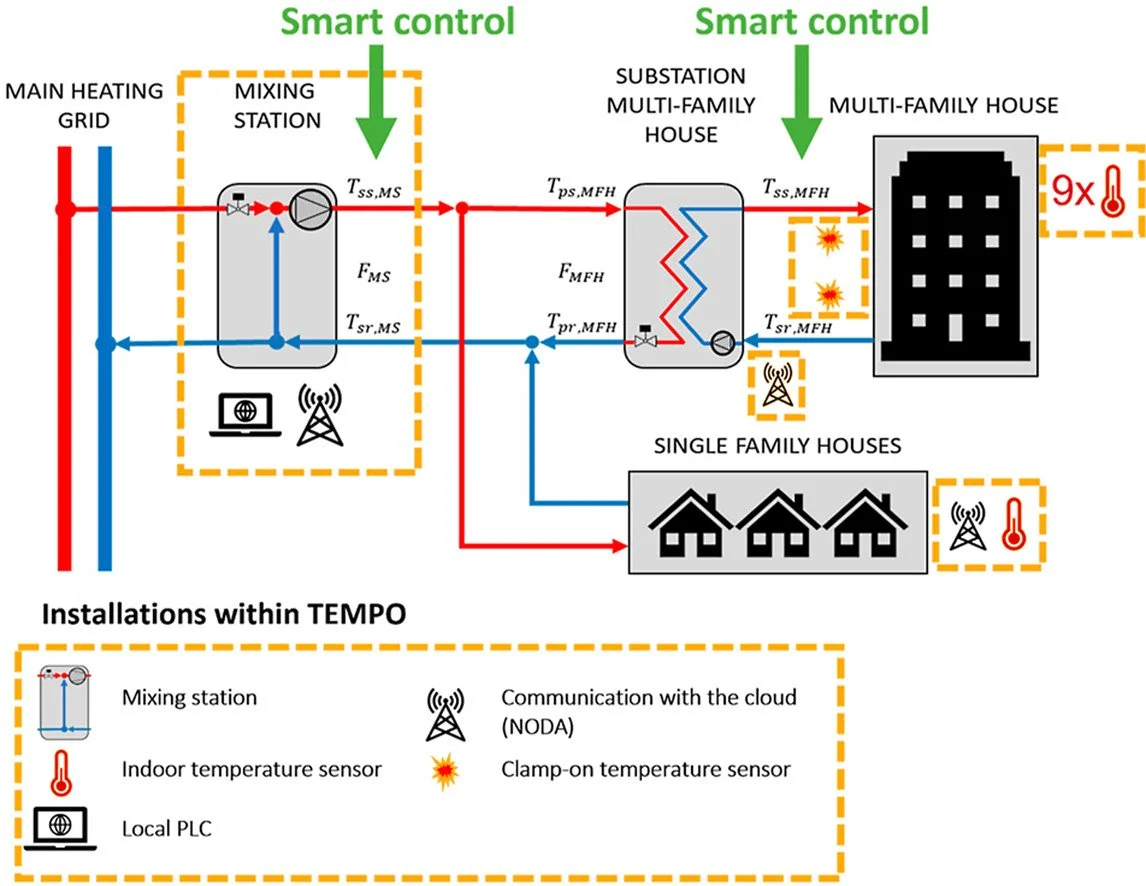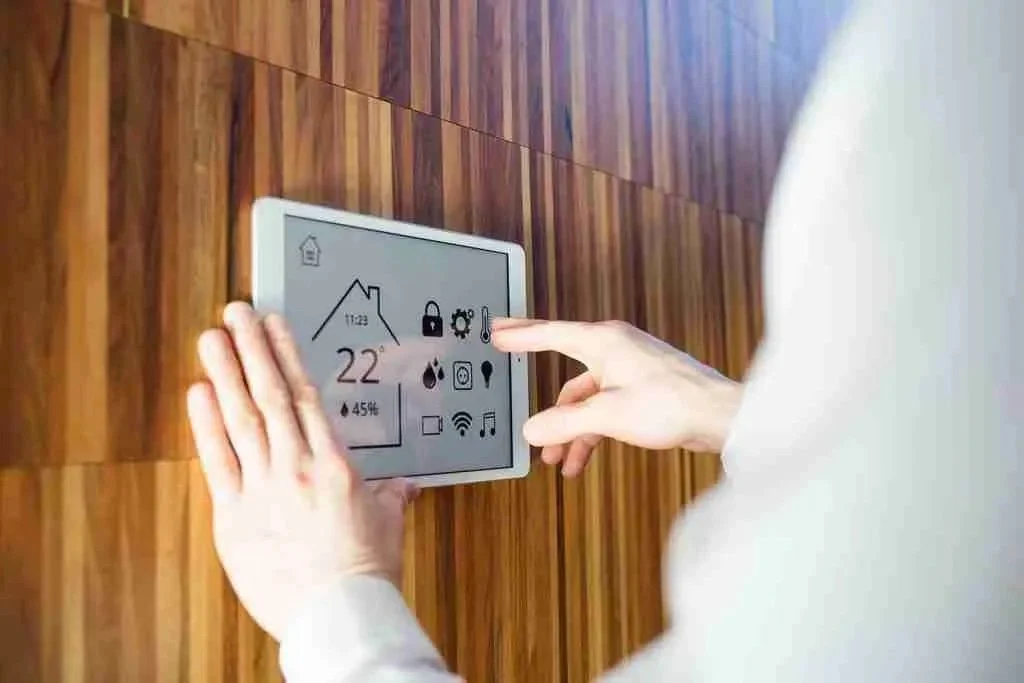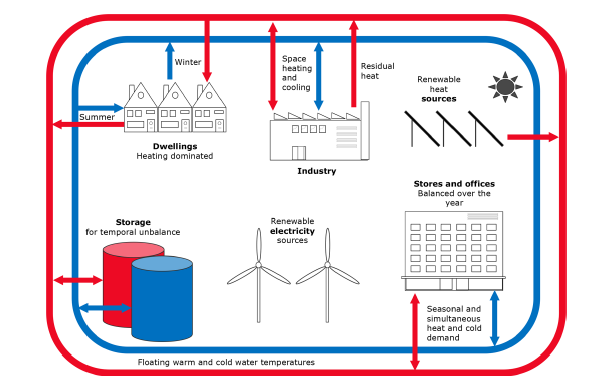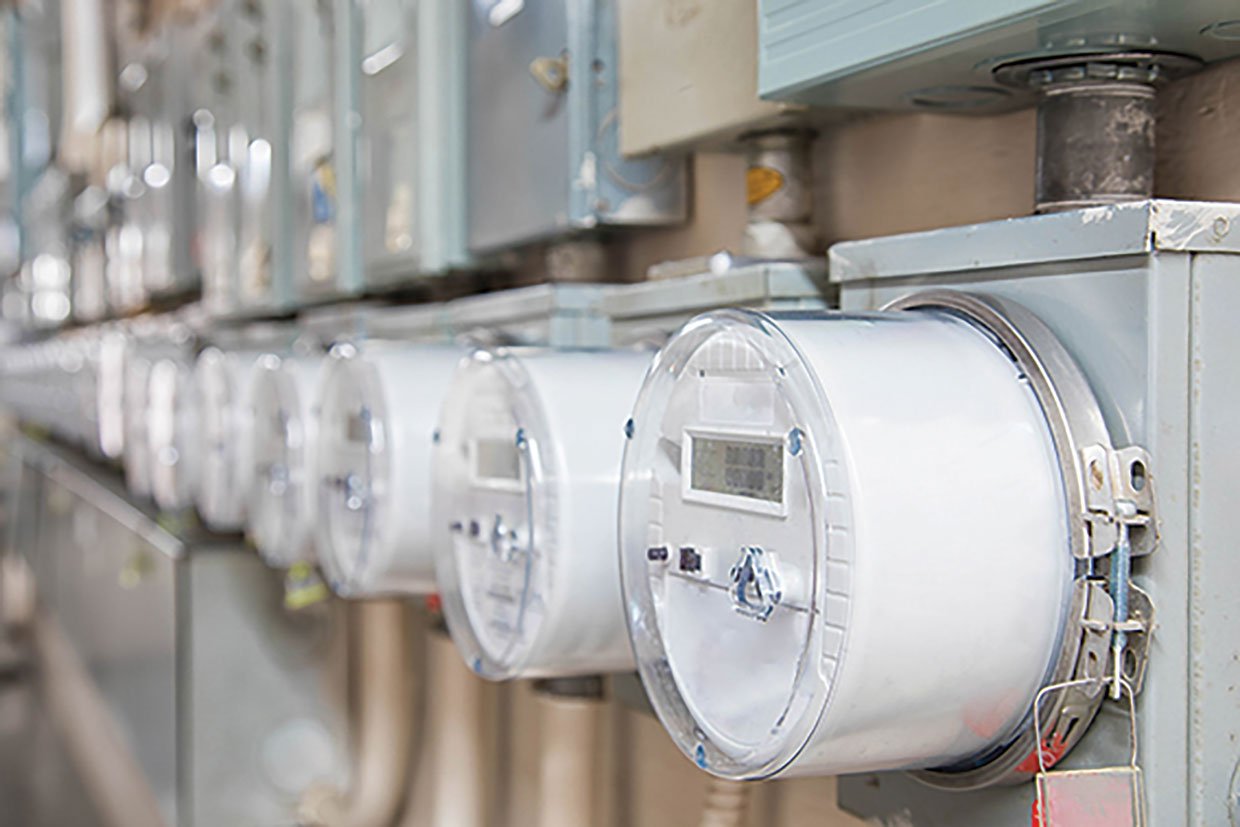
By Design Tech Solutions — Specialists in Smart, Future-Proof Heat Networks
Introduction: Why Smart Technology Is Changing Heat Networks
Traditional district heating systems relied heavily on manual settings, fixed operating parameters, and reactive fault-finding. But in today’s digital world, smart control is transforming how heat networks operate — improving efficiency, performance visibility, and user satisfaction.
Smart technology allows us to monitor, manage, and optimise heat networks in real time. At DTS, we incorporate digital thinking from the outset — so clients get more insight, more control, and better long-term outcomes.
What Is Smart Control in Heat Networks?
Smart control refers to digital systems that manage the flow, temperature, performance, and usage of a heat network — often in real time.
It includes:
Sensors for temperature, flow, and pressure
Metering for heat, energy and user-level consumption
Automated controls (e.g. weather compensation, load balancing)
Digital platforms for monitoring and reporting (e.g. SCADA, BEMS)
Key Benefits of Smart Control Systems
Energy Efficiency
Systems can auto-adjust based on external temperature or usage trends — reducing waste and cutting bills.Loss Detection
Real-time data helps identify leaks, high return temps or underperforming substations quickly.Performance Reporting
Supports investor reporting, compliance monitoring, and long-term asset optimisation.User Experience
Better control at HIUs and clearer billing increases tenant satisfaction.Predictive Maintenance
Digital monitoring allows teams to anticipate problems — not just react.
FAQ
What DTS Provides
We don’t just connect pipes — we design intelligent systems:
Smart-Ready Design Schemes
We plan for sensor points, cable runs, and BMS integration from RIBA Stage 3 onwards.
Metering Strategies
We advise on M-Bus, wireless or remote metering based on your scheme size, layout, and compliance goals.
Control Logic Integration
We define how pumps, valves, and energy centres respond to real-time data — improving performance across the network.
Commissioning Support
We work with BMS engineers to validate that smart features are operational, calibrated, and connected.
Where It Applies
Smart control adds value across:
Residential heat networks (user-level billing and diagnostics)
Public estate schemes (performance monitoring and compliance)
Commercial developments (zoning, load shifting, data reporting)
Whether you’re managing 10 homes or 1,000 — smart systems scale to fit.
Let’s Make It Smarter
Better performance starts with better control. Let’s future-proof your network with digital systems that do the thinking for you.
RELATED READS
Explore our detailed guides on designing effective, future-ready district heating systems. Each article is written to help clients, developers, and stakeholders understand what great network design looks like in practice.







